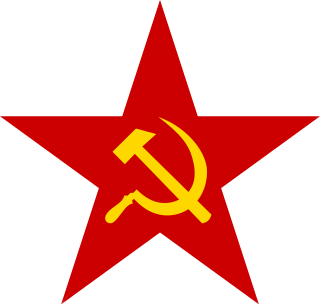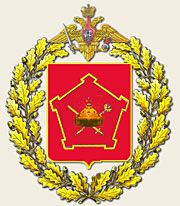| 264th Rifle Division | |
|---|---|
| Active |
|
| Country | Soviet Union |
| Branch | Red Army |
| Type | Rifle division |
| Engagements | World War II |
| Battle honours |
|
The 264th Rifle Division (Russian : 264-я стрелковая дивизия) was an infantry division of the Soviet Union's Red Army during World War II, formed three times.

Russian is an East Slavic language, which is official in the Russian Federation, Belarus, Kazakhstan and Kyrgyzstan, as well as being widely used throughout Eastern Europe, the Baltic states, the Caucasus and Central Asia. It was the de facto language of the Soviet Union until its dissolution on 25 December 1991. Although, nowadays, nearly three decades after the breakup of the Soviet Union, Russian is used in official capacity or in public life in all the post-Soviet nation-states, as well as in Israel and Mongolia, the rise of state-specific varieties of this language tends to be strongly denied in Russia, in line with the Russian World ideology.

The Soviet Union, officially the Union of Soviet Socialist Republics (USSR), was a socialist state in Eurasia that existed from 30 December 1922 to 26 December 1991. Nominally a union of multiple national Soviet republics, its government and economy were highly centralized. The country was a one-party state, governed by the Communist Party with Moscow as its capital in its largest republic, the Russian Soviet Federative Socialist Republic. Other major urban centres were Leningrad, Kiev, Minsk, Alma-Ata, and Novosibirsk.

The Workers' and Peasants' Red Army, frequently shortened to Red Army was the army and the air force of the Russian Soviet Federative Socialist Republic, and, after 1922, the Union of Soviet Socialist Republics. The army was established immediately after the 1917 October Revolution. The Bolsheviks raised an army to oppose the military confederations of their adversaries during the Russian Civil War. Beginning in February 1946, the Red Army, along with the Soviet Navy, embodied the main component of the Soviet Armed Forces; taking the official name of "Soviet Army", until its dissolution in December 1991.
Contents
The division was first formed in the summer of 1941 and destroyed in the Kiev pocket in the fall of that year. Reformed in February 1942, the division's second formation became a guards division for its actions in the Battles of Rzhev. Formed a third time in the summer of 1943 in the Soviet Far East, the division fought in the Soviet invasion of Manchuria in August and September 1945. Postwar, it was stationed in Sakhalin before it was renumbered in 1955.

Kiev or Kyiv is the capital and most populous city of Ukraine, located in the north-central part of the country on the Dnieper. The population in July 2015 was 2,887,974, making Kiev the 7th most populous city in Europe.

The Battles of Rzhev were a series of Soviet operations in World War II between January 8, 1942 and March 31, 1943. Due to the high losses suffered by the Red Army, the campaign became known by veterans and historians as the "Rzhev Meat Grinder".

The Soviet invasion of Manchuria, formally known as the Manchurian Strategic Offensive Operation or simply the Manchurian Operation, began on 9 August 1945 with the Soviet invasion of the Japanese puppet state of Manchukuo. It was the last campaign of the Second World War, and the largest of the 1945 Soviet–Japanese War, which resumed hostilities between the Union of Soviet Socialist Republics and the Empire of Japan after almost six years of peace. Soviet gains on the continent were Manchukuo, Mengjiang and northern Korea. The Soviet entry into the war and the defeat of the Kwantung Army was a significant factor in the Japanese government's decision to surrender unconditionally, as it made apparent the Soviet Union had no intention of acting as a third party in negotiating an end to hostilities on conditional terms.









